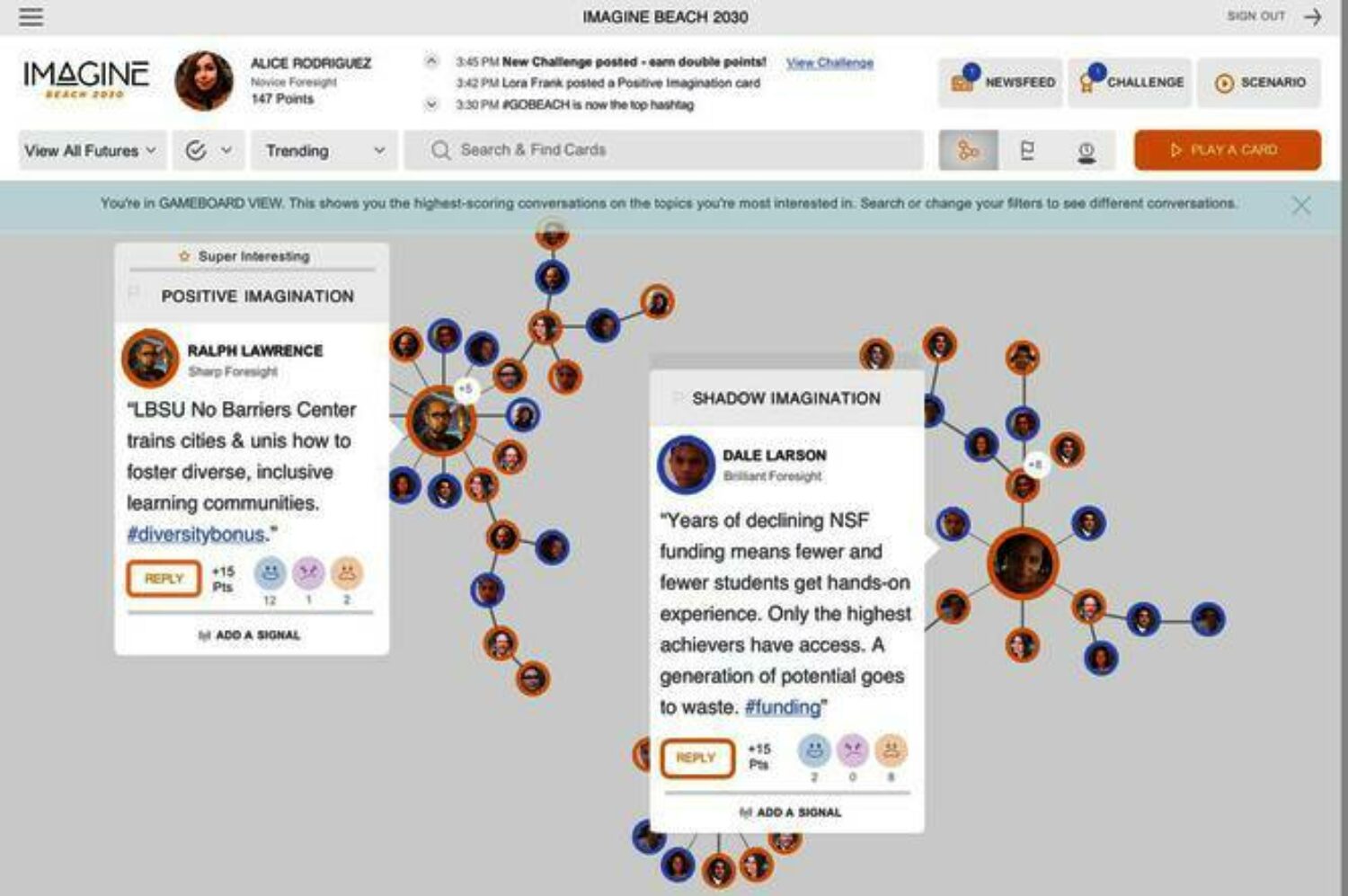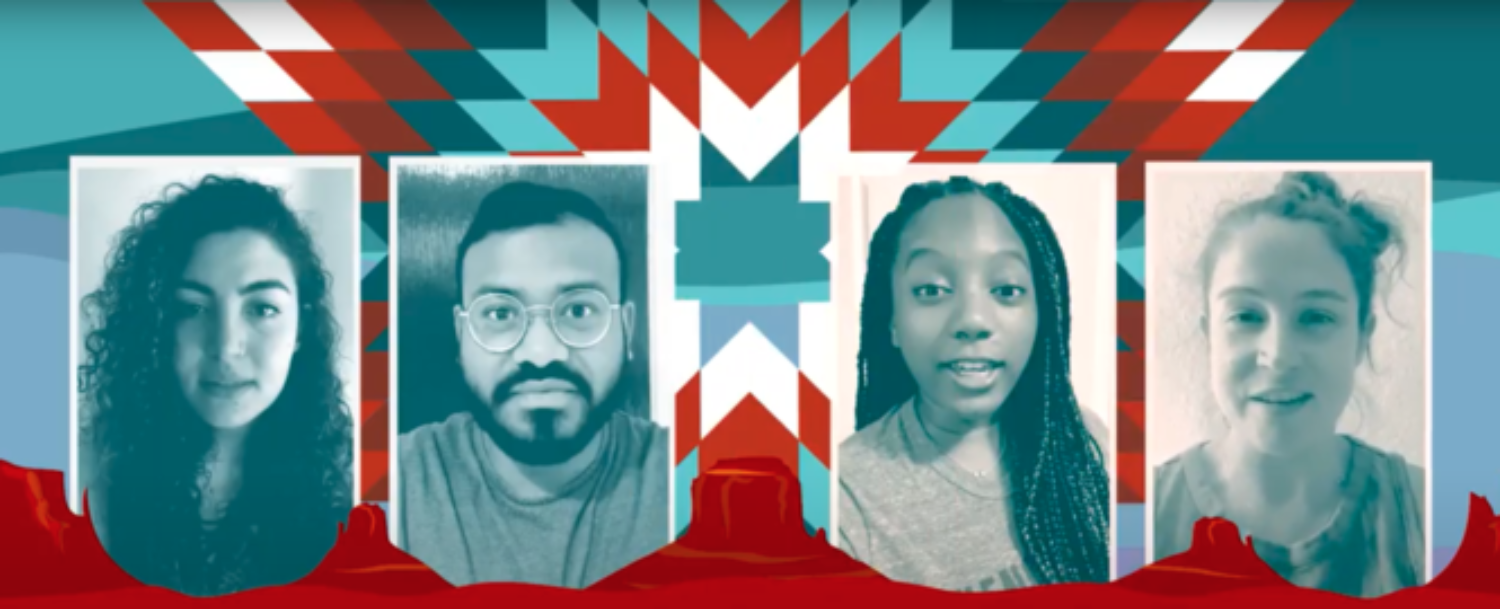Creating Better Futures through Collective Intelligence
Democratizing long-term thinking, and informing collective actions.
Democratizing long-term thinking, and informing collective actions.
In my years as a community engagement practitioner and participatory designer, I learned that the process of participating in the design of something can be just as impactful and transformative as the end product, service, or offering itself.
Similarly, not only will participatory futures exercises result in particularly impressive outcomes in terms of quality, robustness, creativity, and diversity, but the process itself will have long-lasting impacts on participants. Inviting people who traditionally have not been included in futures thinking to actively participate in visioning, creating, and reacting to different futures, will give participants a sense of agency, readiness, and collective narratives of and actions for the future.
Participatory futures, according to a Nesta report released in 2019, are “a range of approaches for involving citizens in exploring or shaping potential futures. It aims to democratize and encourage long-term thinking, and inform collective actions in the present.” As strategic foresight’s origins were born from a Western military history, there was not typically room for active participation from everyday people, let alone marginalized communities. So if we want to expand the reach and accessibility of foresight to better prepare society to take on unexpected challenges, participatory futures has multiple benefits: it can democratize the ways in which futures is practiced, it can lead to more comprehensive solutions, as diverse inputs can lead to more innovative outputs, and it can catalyze action toward a preferred future.
We believe the places that tap into the collective intelligence of communities will thrive in the 21st century. The places that do not will be trapped by outdated thinking and practice.2019 report by Nesta, "Our Futures, by the people, for the people"
At IFTF, we have been incorporating elements of participatory futures and forecasting into our projects for over a decade, running multiplayer games such as Superstruct in 2008, or engaging hundreds of diverse stakeholders to collectively create future visions, or micro-forecasts, as part of a participatory strategic plan process, as we did with Cal State University Long Beach’s (CSULB) “Beach 2030.”
Superstruct was the world’s first massively multiplayer forecasting game. In 2008, over 7000 people from around the world were asked to imagine solutions to the challenges and opportunities of the coming decades, which included pandemics, broken food supply chains, and mass human migration (sound familiar?).
Player interactions and responses were facilitated through blogs, videos, and wikis, in addition to scenario and video prompts. As the instructions said, “We show you the world as it might look in 2019. You show us what it’s like to live there. Bring what you know and who you know, and we’ll all figure out how to make 2019 a world we want to live in.”
Our participatory futures game resulted in two outcomes: (1) providing diverse and innovative outputs (we analyzed the inputs and results to inform our Map of the Decade for 2009); and (2) giving people a sense of agency over their own personal futures. When an actual pandemic hit ten years later, the players who participated in Superstruct, as well as participants in IFTF’s Futures Thinking on Coursera.org who were tasked with thinking about how they would help others during a pandemic, told us that they felt less anxious as they were figuring out how to respond, because they had "lived" through the experience already.
Through our online platform, the Foresight Engine, Beach 2030 participants—California State University Long Beach's students, alumni, faculty, administrators, staff, and community members—were able to create concise micro-forecasts and then to respond to others', allowing for a robust, engaging (and fun!) conversation that took place online over two days. This ultimately helped the university develop its two-year strategic plan and enabled it to envision where it wanted the school to go.

For two days, everyone part of the CSULB system was invited to participate in an online conversation about the various aspects of higher education and university life.
Imagine Beach 2030Participatory futures projects can also take place on a number of publicly available platforms, with wider audiences who are not necessarily connected by a particular organization. We recently hosted Nour Batyne as a guest speaker on our IFTF Foresight Talks webinar series to discuss her work with Resilience 2032, a “Social Media Theater” participatory futures project. This project invited people—particularly young people—to step into the year 2032 and engage with the issues they might be living with in the future: climate, racial justice, food access. By hosting weekly conversations on these issues on Disquisitive LIVE, a weekly talk show from the future livestreamed on Facebook, participants were invited to think about issues they wouldn’t otherwise have, which encouraged them to rethink their engagement in the political system, with an ultimate goal of trying to increase voter turnout in the 2020 election.
Nour told us in the webinar that “participatory work is not top down. It’s what you are able to co-create together.” The development of this world of 2032 was an ongoing and co-creative process; following the weekly talk shows, participants engaged in 30-minute discussions on Zoom, during which Nour facilitated conversations with them using futures tools such as world-building, artifacts from the future (including political ads), signals, or the futures cone. These rapid-fire discussions resulted in prototypes of characters, actions, and decisions that ultimately created the world of 2032.

For Resilience 2032, Nour Batyne invited participants to share their visions for the future.
Nour BatyneParticipatory futures processes can be used across sectors and industries, from corporate stakeholder engagement to government and policy-making. Japan’s Future Design Movement, for example, is involving everyday citizens into visioning their cities in 2060 to help develop future-informed policies.
Here are key principles for creating a participatory futures process for your own work, strategic planning, policy or product development, or other initiative.
Want to receive free tips, tools, and advice for your foresight practice from the world's leading futures organization? Subscribe to the IFTF Foresight Essentials newsletter to get monthly updates delivered straight to your inbox.
Ready to become a professional futurist? Learn future-ready skills by enrolling in an IFTF Foresight Essentials training based on 50+ years of time-tested and proven foresight tools and methods today. Learn more ».